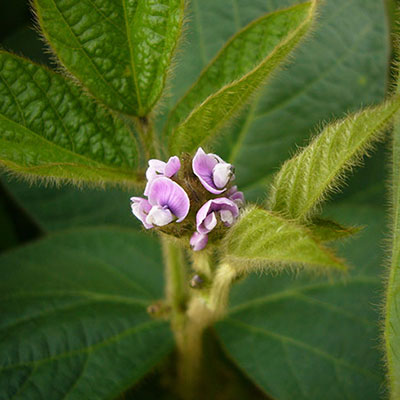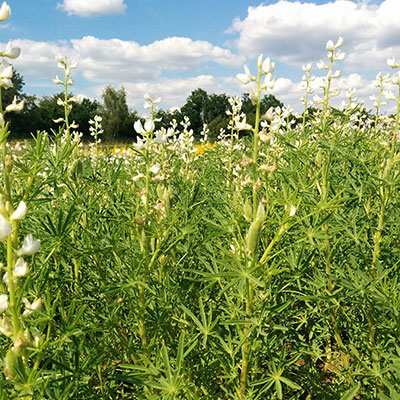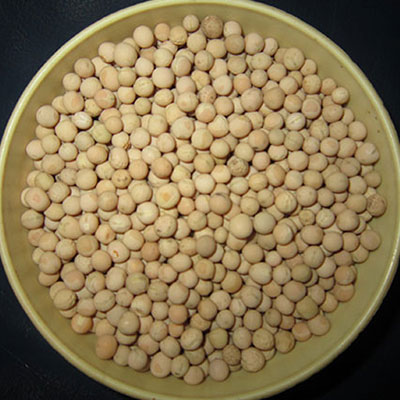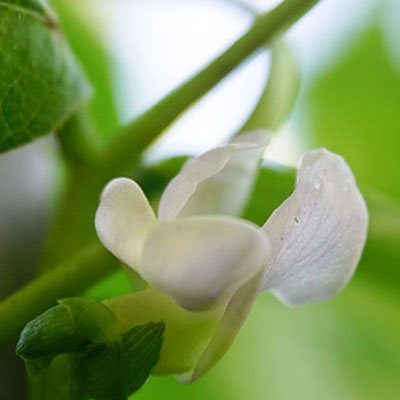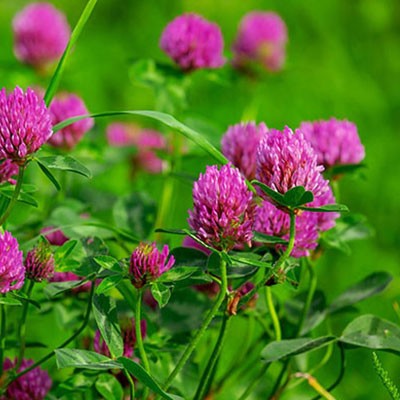Soybean
Lentil
Lupin
Phaseolus bean
Pea
Clover
Soybean
Soybean is the world’s leading legume crop and is the most widely grown and productive grain legume in Europe (about 5.5 million ha in Europe; 830,000 ha in the EU). It has outstanding agronomic, food and feed quality characteristics and is supported by a strong research and innovation base represented in this consortium.
Yield potential is high and yields are relatively stable with high protein concentration (40%) and oil (20%); the biological resource and intrinsic economic value per tonne of grain is high. Soya is already competitive with the major crops over a large part of southern Europe. Our goal is a long-term steady increase in protein yield per hectare.
Besides feed and traditional soy-foods, numerous food applications have been developed for soybean protein extracts, soybean oil, or lecithin as valuable high potential ingredients in the food industry.
Lupin
Lupins (blue or narrow-leaved (Lupinus angustifolius), white lupin (L. albus) and Andean lupin (L. mutabilis) are also protein-rich oilseeds, increasingly used in food products, as well as for feed.
Although well-adapted to light acid soils in north-eastern Europe in particular (about 25,000 ha in northeast Germany and more than 10,000 ha narrow leafed lupin in Poland; about 12,000 ha of white lupin in France, Italy and Spain), breeding progress has been limited due to the narrow genetic bases.
Lupins have a deep, proteid tap root with an active microbiome that is efficient at using soil-bound phosphorus. N-fixation works well if inoculated with Bradyrhizobia. Andean lupin has exceptional nutritional value. We see opportunities arising from our observations of a broad spectrum of rhizodeposits which has not yet been exploited.
We, in particular ESKUSA, also have observed a range of different interesting characters in bitter lupin to be introgressed into sweet lupins. The genetic potential is there; we have to turn it into grain yield for farmers.
Pea
Pea is Europe’s most widely-grown cool-season legume that is important in emerging novel food markets and for high value feed uses (e.g., aquaculture). Despite being a model for plant genetics, the rate of pea improvement has lagged behind that of cereals. Reversing this trend in yield differences is of critical importance.
Our breeders (e.g., KWS, RAGT2N, DANKO) are well positioned to draw on the extensive resources we have in JIC to combine several different types of traits including developmental, morphological, stress-related and metabolic traits.
Lentil
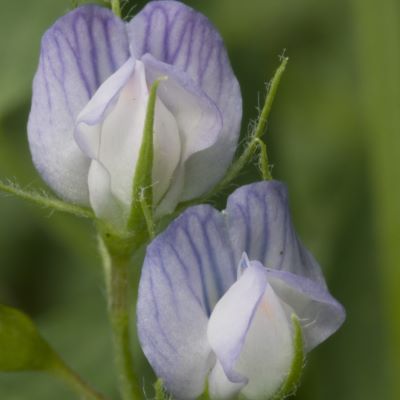
Lentil is an important cool- and short-season grain legume, a traditional part of sustainable healthy diets, and a rich source of fibre, minerals and plant-based proteins. It is also traditional to European farming (currently is cultivated in about 130,000 ha with an average yield of 0.9 t/ha (FAO, 2020) mainly in the Mediterranean region).
The EU growing market about 300,000 t/a for heathy sustainable diets opening a business opportunity for us from the improvement of traditional landraces connected with specific areas in Europe (Protected Geographical Indication (PDO) and Protected Geographical Indication (PGI) products) and/or from wider expansion in agriculture using higher- yielding lentil genotypes, with improved seed size and quality, different colours, and better adaptation to European agro-ecosystems, especially in water-stressed regions.
© Copyright lentil picture: Thomas Stephan, Munderkingen.
Phaseolus bean
Phaseolus beans (‘beans’) are the second most important cultivated legume species in the world (33 million ha, FAOStat 2020) and the most important legume for human consumption.
Beans are a traditional food crop grown widely over Europe for grain (dry bean, 202,182 ha in 2017) and as a vegetable (green bean, 96,230 ha). In fact, 18 European traditional high quality dry bean production chains are protected by PGI and PDO.
However, despite our substantial research base in Europe, the growing market for beans for sustainable healthy diets will be met from low cost imports unless the European crop is revived. This revival is our goal.
Clover
Red clover (Trifolium pretense) and white clover (T. repens) are particularly relevant to the sustainable development of grassland-based agriculture, arable forage (esp. red clover), and for nitrogen fixation in mixed cropping.
Despite this important role, genetic gains for key traits such as forage/seed yield and persistency have lagged behind that of the forage grasses with which they are grown. Clovers respond to investment in breeding with improvements in agronomic traits.
Our goal is to improve the major agronomic traits in both species using molecular techniques, which are designed to be transferable to other forage species, particularly lucerne/alfalfa (Medicago sativa).

